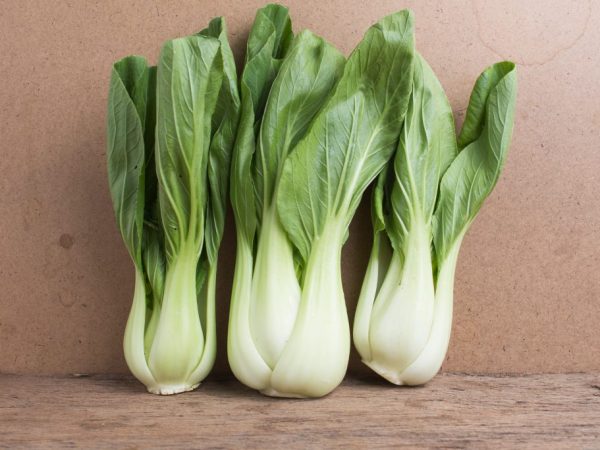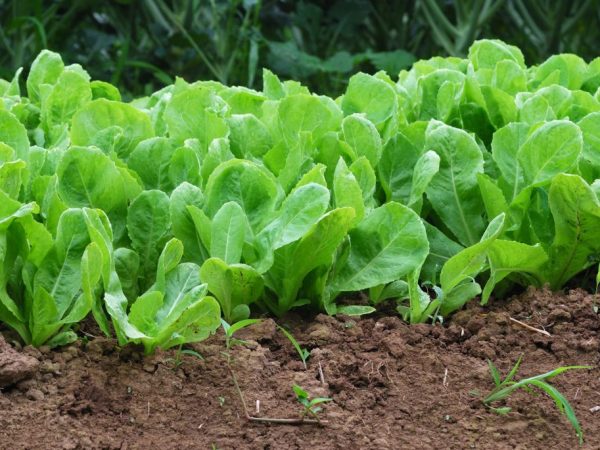Rules for growing pak-choy cabbage
Pak Choi cabbage looks like a salad, it is unpretentious in cultivation and gives a rich harvest. We will consider a detailed description of the variety and its beneficial properties for the body in the article.

Rules for growing pak-choy cabbage
Variety characteristic
Pak choy cabbage belongs to annual (in rare cases - to biennial) plants from the cruciferous group. A distinctive feature is that it does not form a head of cabbage. The plant forms a rosette up to 30 cm in diameter, consisting of bright green leaves 35-65 cm long. Among the varieties grown in Russia, you can find two:
- species with dark green leaves and white petioles;
- a species in which all vegetative parts of the plant are colored light green.
Pak choi belongs to the early-maturing leafy cruciferous plants that give the first harvest within a month after the seedlings are planted in the ground. The average duration of the growing season is 45-55 days. This makes it possible to harvest several times per season.
Popular varieties:
- Vesnyanka. It is characterized by good germination: sprouts appear as early as 3-4 days after planting the seeds, and the crop can be harvested after 3 weeks. The average height of the rosette is 35 cm.
- Swan. Yields yields in 45 days. Height 35 cm. Differs in good immunity.
- Alyonushka. Became known for its taste and juicy foliage, fleshy wide root, ripens in 45 days.
- Peahen. It is a leafy hybrid obtained from crossing a Peking and Chinese cruciferous. It is resistant to stalking and can be sown at any time.
Composition
Pak choi cabbage is appreciated for its useful composition, which contains:
- vitamins: A, C, PP, group B,
- minerals: iron, phosphorus, potassium, magnesium,
- acids: lysine, folic.
Beneficial features:
- prevention of various diseases;
- it serves as a source of energy necessary for active cell growth, the production of antibodies, hormones and enzymes;
- the vegetable prevents the appearance of changes that are of an oncological nature;
- actively cleanses the body of toxins and toxins.
The low-calorie product has found its popularity among those people who intend to lose extra pounds and is recommended for the inclusion of dietary diets.
Ground requirements
Sandy loam and loamy soil are considered the most suitable for Chinese cabbage.
The acidity of the soil when growing cabbage should be in the range of 5.5-6.5 pH.

The plant is demanding on the soil
Following the crop rotation, it is recommended to plant seedlings in the beds where cucumbers used to grow, but after the cruciferous, it is better not to plant it. Such predecessors significantly reduce the quantity and quality of the crop.
Fertilizing the soil
Fertilizing the land for planting is recommended in the fall. It is enough to add organic food at the rate of 1 bucket per 1 square meter of cultivated area. The acidity of the soil can be adjusted with ash powder at the rate of 200g per 1 square meter of beds.
Growing seedlings
The best time for sowing seeds is between April and August, because early maturing cabbage can be grown throughout the warm season. Many gardeners try to germinate seeds starting in June, as the July pak choy cabbage gives the richest yields.
Ready-made peat cups can be suitable containers for planting seeds. For better germination of cabbage seeds, the soil can be mixed with humus.
Some sow seeds directly into open soil. With this cultivation, it is recommended to start sowing in early June, when constant warm weather sets in.
Holes for seeds are made at a depth of 2-3 cm, observing a distance between them of 20-30 cm and a row spacing of 25-35 cm.For varieties with large rosette diameters, it is recommended to calculate an area for 1 sprout 30 * 30 cm, for smaller specimens - 20 * 20 cm.
Seedling care
Immediately after sowing the seeds, it is required to water the soil with water at room temperature and place the containers in a place illuminated by the sun.
In the subsequent care, every 4-5 days you need to water the seedlings with water at a temperature of 15 ° and above. With the formation of the first 3-4 leaves (after 2-3 weeks), soil is poured under each sprout. This speeds up the process of emerging the next leaves.
Transplanting seedlings
When 5 leaves appear in the sprouts, the seedlings of pak choy cabbage are ready for transplanting into open soil. This usually occurs 20-21 days after sowing the seed.
Regular spraying of plants allows the seedlings to take root faster in a new place. This is done 2-4 times a day during the first week.
Care
The basis of care is regular hilling and weeding, which can be replaced by mulching. It can also increase productivity. Compost, pine needles and grass cuttings are good mulch as they retain moisture well.
When leaving, it should be remembered that the plant is prone to shooting and flowering, especially with an increase in the length of daylight hours.
Do not treat plants with chemicals during the growing season, use exclusively folk remedies. Pak choi cabbage quickly accumulates chemicals and does not have time to ripen in a short time to remove harmful substances.
Cabbage is watered at the rate of 15-20 liters per 1 square meter of planting. Increase the standard of water consumption during irrigation at the stage of formation of cabbage rosettes.
Pest control
The greatest harm is caused by cruciferous fleas, which can completely destroy future crops. The pest appears on the plant in spring, as soon as the air warms up to 15 °.
You can spray Chinese cabbage with the following means:
- mixtures of liquid soap and wood ash,
- infusions of garlic and tomato tops,
- infusions of dandelion roots and soap,
- infusions of wormwood with garlic arrows.
In some cases, gardeners try to cover the sprouts that have not yet matured for a short period of time with non-woven materials - spunbond or lutrasil.


